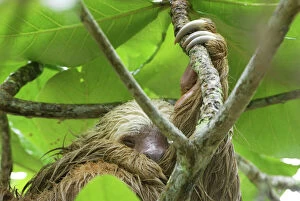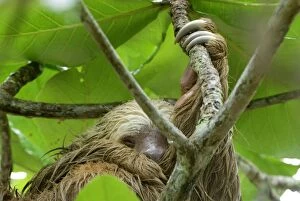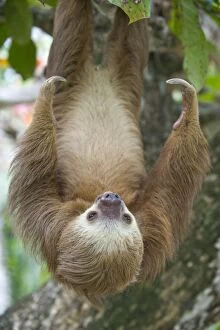Hoffmanns Collection
In the lush rainforests of Cahuita National Park in Costa Rica, a fascinating creature called Hoffmann's Two-toed Sloth can be found
All Professionally Made to Order for Quick Shipping
In the lush rainforests of Cahuita National Park in Costa Rica, a fascinating creature called Hoffmann's Two-toed Sloth can be found. These slow-moving mammals are known for their unique appearance and intriguing behavior. Picture No. 10751313 captures one of these sloths gracefully hanging from a tree branch, its two-toed feet firmly gripping onto the wet bark. During heavy rain showers, like in Picture No. 10750548, these remarkable creatures showcase their adaptability by seeking shelter under thick foliage or within the canopy itself. With their long claws and strong limbs, they navigate effortlessly through the dense vegetation to find refuge from the downpour. Picture No. 10900746 showcases a close-up of this sloth's face, revealing its endearing expression and gentle eyes that seem to reflect wisdom beyond measure. Their calm demeanor is further highlighted in Picture No. 10900748 as they peacefully rest on a branch amidst the rainfall. Hoffmann's Two-toed Sloths have an incredibly slow metabolism which allows them to conserve energy while spending most of their lives hanging upside down from trees like in Picture No. 10900747. This peculiar lifestyle choice not only provides protection but also makes it easier for them to feed on leaves and fruits without having to descend often. Their fur acts as camouflage against predators and helps retain moisture during rainy days as depicted in Picture No. 10900738 where droplets cling delicately onto each strand of hair creating an ethereal effect. Despite being primarily arboreal animals, these sloths occasionally come down to defecate once every week or so - an event rarely witnessed by humans due to their elusive nature (Picture No. 10900745). They carefully choose specific spots on the ground where they dig shallow holes before relieving themselves (Picture No. 10900740).

















